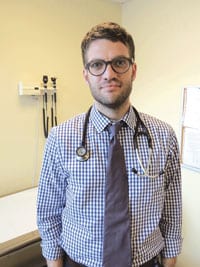The Heroin Epidemic – This Is a Regional and National Crisis in Many Parts
“In every corner of our state, heroin and opiate drug addiction threatens us. It threatens the safety that has always blessed our state. It is a crisis bubbling just beneath the surface that may be invisible to many, but is already highly visible to law enforcement, medical personnel, social-service and addiction-treatment providers, and too many Vermont families. It requires all of us to take action before the quality of life that we cherish so much is compromised.”
This was perhaps the most notable — and often quoted — passage from Vermont Gov. Peter Shumlin’s now-famous State of the State address, delivered two months ago.
After opening with some upbeat comments about companies expanding, home values rising, and how the state enjoys the fifth-lowest unemployment rate in the country, Shumlin spent the rest of his speech using a powerful mix of words and numbers — such as a 770{06cf2b9696b159f874511d23dbc893eb1ac83014175ed30550cfff22781411e5} increase in treatment for all opiates since 2000 — to convey the scope of what he called a “growing epidemic.”
In so doing, he helped make the phrase “heroin crisis” part of the national and regional lexicon, well before Philip Seymour Hoffman was found dead in his New York apartment with a needle in his arm.
But, in reality, the word ‘crisis’ has been in use for several years, said experts on the subject who spoke to HCN. And this is a crisis in many parts.
For starters, there are the staggering statistics about the numbers of people considered addicted to opiates, and especially heroin. They cover all age groups and economic strata, but a good many of them are young people who became hooked on prescription painkillers such as Oxycontin and Percocet. And when those products became either unattainable or prohibitively expensive, they turned to absurdly cheap and widely available heroin.
Then, there is the horrifying rise in the number of deaths from heroin overdose, like Hoffman’s. There are many reasons for this surge, but the predominant factor is that those who have become addicted to heroin want an increasingly more potent kick, said Dr. Robert Roose, chief medical officer of Addiction Services for the Sisters of Providence Health System, which operates inpatient and outpatient substance-abuse programs at Providence Behaviorial Health Hospital, as well as two methadone clinics. And suppliers, eager to get whatever edge they can on their many competitors, are only too eager to provide it, mixing their products with other opiates, such as fentanyl, which is commonly prescribed to cancer patients, can be 40 times more powerful than heroin, and has been linked to overdoses in several states.
“The biggest risk in using heroin is that you just don’t know what’s in it,” Roose said. “It’s a gamble with your life every time you use.”
But there is still another side to this crisis, said Dr. Amanda Wilson, a board-certified addiction specialist and president and CEO of Northampton-based CleanSlate, which operates nine facilities that provide what’s known as office-based opioid treatment. And that is a clear insufficiency of treatment facilities for the growing numbers of people addicted to opiates.
“Three patients drive every day from Burlington, Vt. to our Greenfield office because there is a 2 1Ž2-year waiting list in Burlington for treatment,” said Wilson, who was the keynoter at February’s HCN Food for Thought Luncheon, with a program titled “The Alarming Prevalence of Opioid Dependence — Innovative Treatment Options in 2014.”
“Right now, CleanSlate has a 400-patient waiting list,” she added. “There are so many people in Massachusetts in need of care and so few slots available.”
CleanSlate is responding by working to add 10 physicians to its roster, which will enable the company to treat an additional 1,000 patients (regulations limit physicians to 100 patients), but the number of people who need help is much higher, and likely to continue growing.
People such as Wilson and Roose use the word ‘likely’ because maybe the most disconcerting aspect of the heroin crisis is that no one really knows where it is with regard to its bell curve — or if this will even be a bell curve.
“We’re not seeing anything to indicate that things are slowing down,” said Wilson. “I don’t know if we’re at the top of the curve and that things are going to improve; it will take a few years for us to know.”
What’s clear, said both Wilson and Roose, is that this country cannot arrest or incarcerate its way out of this problem — heroin is simply too plentiful and attainable, and there is little, if any, evidence to suggest that this will change anytime soon.
Instead, the matter must be treated as a healthcare issue, with initiatives focused on treatment and prevention, they said.
For this issue, HCN turns its focus on the many aspects of the heroin crisis and what experts believe can, and must, happen to stem this tide of abuse — and death.
Bitter Pills
Roose came to Providence Behavioral Health Hospital last summer after a stint as director of quality improvement in the Division of Substance Abuse at the Albert Einstein College of Medicine in the Bronx.
That New York City borough has long been considered the front lines, or ground zero, when it comes to heroin addiction and efforts to treat and combat it.
“If you think of heroin or cocaine addiction, the Bronx has been entrenched with those problems for decades,” said Roose, adding quickly that, while the epidemic may be more “mature,” as he put it, in that heavily populated area, the current crisis certainly knows no boundaries, literally or figuratively. And ground zero is now the whole country.
Indeed, it seems that almost daily there is a new dateline attached to a news story about a rising number of heroin overdoses and deaths. Recent reports have been filed out of Cape Cod, the Berkshires, Southeastern Mass., and seemingly innocuous communities such as Taunton — and, especially after Shumlin’s address, just about every corner of Vermont.
The list of CleanSlate locations across the Commonwealth — carefully chosen to address large volumes of need — speak to the widespread, and seemingly random, nature of this epidemic. Springfield, Holyoke, Pittsfield, Greenfield, West Springfield, Ware, Worcester, Lowell, and New Bedford now have facilities, said Wilson. She noted that the reasons why the problem is so acute in these communities and those surrounding them vary, from close proximity to major highways (I-91, for example, is considered a main artery for heroin trafficking) to poverty to high unemployment (Athol, the Franklin County community with one of the highest jobless rates in the state, has a huge problem). In many cases, there are combinations of the above, as well as other factors that are not so obvious.
“In our New Bedford office, a good number of our patients are fishermen,” said Wilson, offering one example of just how far-reaching this crisis is. “There is a quite a high rate of heroin dependence among fishermen, and that’s quite depressing. I’m not entirely sure why, but many of them have chronic pain issues stemming from the work that they do, and perhaps they’re just out there on the ocean and miserable.”
But while there are still some mysteries attached to America’s growing dependence on heroin, the basic cause of this crisis is not one of them.
It stems from the very large number of people, from across all income levels, who became hooked on prescription opiates, or pain medications, over the past 15 to 20 years, said Roose, adding that there were many factors involved in this phenomenon.
“There was an increase in the demand for recognition of the treatment of pain in the medical community,” he explained, “and also a poor understanding of the true risks of addiction when someone is prescribed opiates for their pain, which led to a dramatic rise in the availability of these painkillers in people’s homes and in the community.
“And with that dramatic increase in the ’90s, that led to more exposure, particularly to young people, and a willingness to experiment with these pills from the medicine cabinet,” he went on. “And from a public-health standpoint, with the rise of these medications came a rise in misuse of them — people taking them for purposes other than prescribed.”
Eventually, the problem became so acute that regulations were put in place that limited how medications such as Oxycontin, Percocet, Demerol, and Vicodin were manufactured and prescribed, said Roose, noting, for example, that one form of Oxycontin has been reformulated, meaning that it can no longer be crushed and snorted as it once was. Meanwhile, the laws of supply and demand have made such drugs prohibitively expensive; on the street, the cost of Oxycontin is roughly $1 per milligram, and the average dosage would be 80 milligrams.
But those who no longer had access to those prescription medications were still very much addicted to the high, or feel, that they provided, said Roose, so they looked for a cheaper, more accessible alternative.
And, in most cases, they found it in heroin.
Overdose of Reality
This has taken the crisis from places like the Bronx, where heroin has been an issue for decades, to some of the most rural spots in the country.
“Any doctor who had the appropriate license could write a prescription for a painkiller, and that can happen in any small town in America,” Roose told HCN. “Once that epidemic started, young people, middle-aged people, and older people became hooked on prescription opiates. The progression for many of them is to look for something cheaper once it’s available.”
And heroin is certainly available — and cheap, especially in this region. The going price: $5 a bag.
“I’ve never had a patient report to me, either in New York or Holyoke, that they had trouble getting heroin, and that’s a big part of this problem,” said Roose. “From what I read in the papers, and speaking with patients coping with this every day, the corridor between New York City and Holyoke and into the Northeast is one that provides a steady supply of heroin.”
Wilson agreed. “Kids in high school tell me they can get heroin in their school easier than they can get pot,” she said. “It’s so readily available, very cheap, and also quite potent, unfortunately — much more potent than it used to be.”
That’s why the crisis has taken on an even more frightening tone in recent months, with a sharp rise in the number of deaths from heroin overdose.
“The magnitude of overdose in this country is unlike anything we’ve ever seen,” said Roose, who made use of the often-quoted statistic that, starting in 2009, there are more unintentional deaths from overdose than from automobile accidents.
In fact, two people die in Massachusetts every day from overdoses, said Wilson, who noted that, while the phrase ‘bad batch’ has also become part of the lexicon, especially following Hoffman’s death, there is really no such thing as a good batch.
That is especially true today as suppliers continue to mix opiates in hopes of creating more in-demand offerings to the growing numbers of addicts. The fact that they’re killing off some of their customers doesn’t seem to deter them.
Fentanyl has been linked to recent overdoses in Rhode Island and Pennsylvania, and while it hasn’t been linked to many, if any, deaths in Massachusetts, officials believe the drug is on its way to Bay State communities, if not already there.
Another problem is that individuals using opiates are often mixing them with other drugs and/or alcohol, and these combinations can sometimes be fatal.
“There are many varieties of heroin out there, and that’s why you don’t know what you’re getting and also why there’s no safe dose,” said Wilson. “Mixing heroin with other substances is very lethal, and that’s a public health crisis, in my opinion.”
In response to the surge in overdoses, health and public-safety officials, as well as many politicians, are calling for training more people in the use of naloxone, an opioid widely known by the trademark name Narcan, which can quickly reverse the life-threatening effects of overdoses.
“Creating mechanisms that would increase access to this would be very helpful,” she explained. “We need to get it into community centers, pharmacies should be able to carry it, and patients should be able to buy it over the counter. It should be widely available, but at the moment, it’s not.”
Moving the Needle
But the even bigger priority is to make treatment options available to more addicts, said those we spoke with, who noted, repeatedly, that attempts to limit access to opiates and especially heroin, while still important, are not the answer.
“Many people are saying, and I agree with them, that the drug war has not been successful,” said Wilson. “The goal of trying to eliminate access to the drugs is not the way to stop use of the drugs. People will find a way to get these substances.
“Instead, if we got more people into treatment, that might make a meaningful difference,” she went on. “Right now, in New England, the average state spends roughly 98 cents of every dollar [on programs to fight drugs] on incarcerating people, hunting people down, the judicial system, all of that, and 2 cents of every dollar on treatment and prevention. In my opinion, that’s backwards.”
Doing some quick math, Wilson said the 35 physicians currently employed by CleanSlate are treating 3,500 people; the 10 currently being hired will bring that patient total to 4,500. Meanwhile, the various methadone clinics around the state are treating 10,000 to 15,000 people. So if the estimates of 120,000 opiate addicts in the Bay State are accurate, that leaves perhaps 100,000 people without access to treatment — if they’re trying to get it.
“That’s why we consider this a crisis, a healthcare crisis,” said Wilson. “If people can’t get someone to provide care for them, if there’s no one out there available — and right now there are very few slots available in this state — then they are still using, because there’s nothing else they can do.”
And getting people into treatment is the key, she went on, because the various forms of treatment — from methadone to the use of the medication Suboxone at CleanSlate facilities — have, by and large, been successful in helping people gain control of their addictions, and their lives, and achieve recovery.
Roose agreed.
“From my understanding of the evidence, some of the rates of prescription-opiate addiction has plateaued, and so I hope we’re at the top and that we’re going to start to see improvement in regard to this,” he noted. “But what we’re still grappling with are the many patients transitioning from opiates to heroin, and we’re grappling with meeting the demand for treatment, especially in places that have not traditionally had such a need for treatment.”
He said he’s become keenly aware of the problem since arriving in Holyoke from the Bronx.
“In New York City, there are many treatment programs, and addiction has been present for a very long time,” he explained. “If someone was looking for methadone-maintenance treatment to deal with opiate addiction, they can usually get into a program that day or the next day.
“When you’re working in a part of the state like Western Massachusetts, which is seeing a dramatic increase in the rates of opiate addiction, there needs to be an adaptation so the amount of treatment can meet the demand,” Roose went on.
One of the hurdles to increasing the supply is the fact that addiction-treatment services, and behavioral healthcare in general, is not a profitable undertaking due to inadequate reimbursement rates from most major payers.
“There has not been, up until this point, parity with insurance companies when it comes to how well they reimburse for addiction services,” he said, noting that the Sisters of Providence Health System is a nonprofit entity, and undertakes behavioral-health services as part of its broad mission. “There’s a pressing need in the community to try to expand services for the treatment of opiate addictions and other addictions, and to continue to try to integrate addiction services into the rest of primary care and other mental-health services; this is a community struggle, but also a nationwide struggle.”
When it comes to prevention, there are several avenues to consider and constituencies to address, said Roose, noting that physicians must be educated on the possible dangers of prescribing painkillers, and schoolchildren have to understand the enormous risks they take when they start experimenting with these substances.
“They have to realize just how quickly they can become dependent on these drugs,” he said, adding that prevention efforts must go further than the ’80s-style, ‘just say no’ endeavors, which, history shows, were not very successful.
“We know that that’s not a very effective strategy for someone who already has an addiction, and it’s also not an effective strategy just to tell kids something they can’t do,” said Roose. “We have to give them something that they can do, meaning opportunities for families and children.”
The Bottom Line
Roose called addiction to opiates, and especially heroin, “an unfortunate leveler.”
He used that phrase to drive home the point that this crisis can touch anonymous people living in poverty and also impact wealthy, instantly recognizable Hollywood actors like Hoffman.
“Addiction, and particularly opiate addiction and overdose, has gotten to the magnitude that it impacts everybody,” he told HCN. “I don’t know anyone who hasn’t been touched by this in some way.”
That was essentially the message that Vermont Gov. Shumlin left with his State of the State address, wrapping up that speech with these words:
“All of us, together, will drive toward our goal of recovery by working with one another creatively, relentlessly, and without division.”
Unless that happens, this will be a crisis with no end in sight.





Comments are closed.